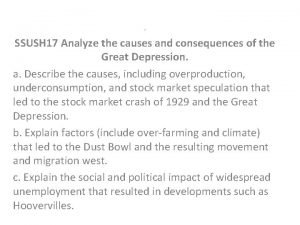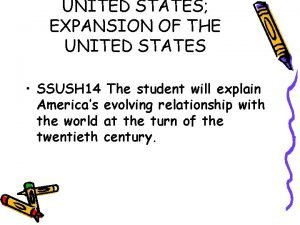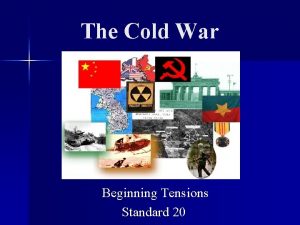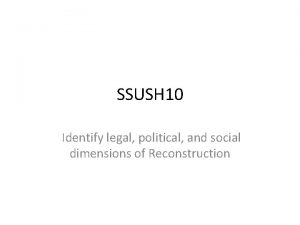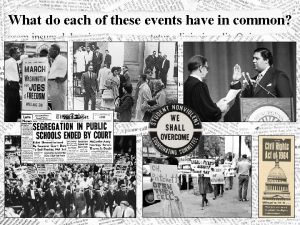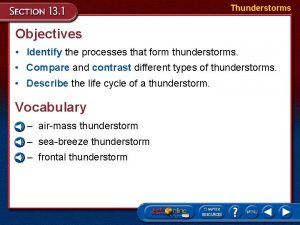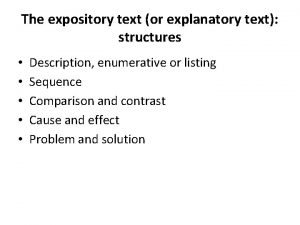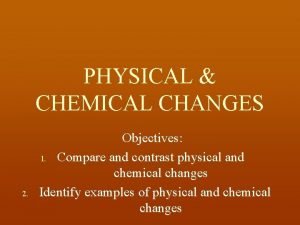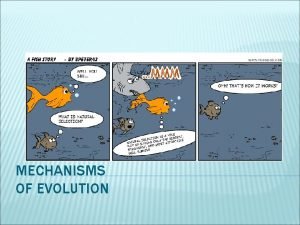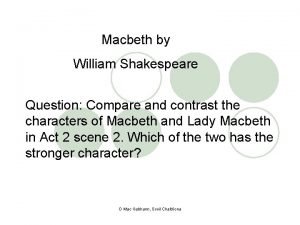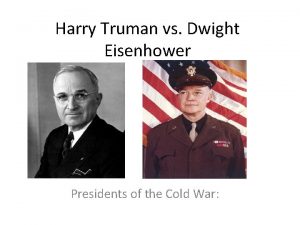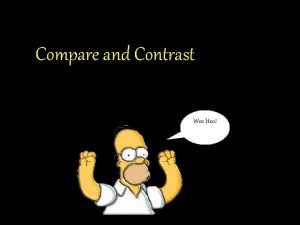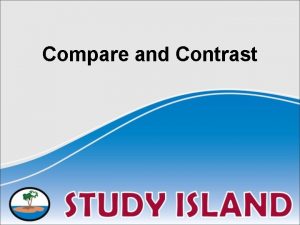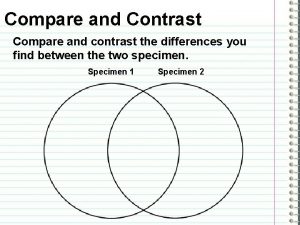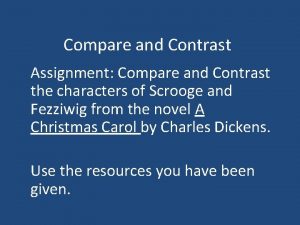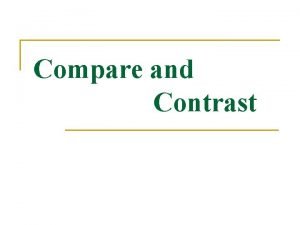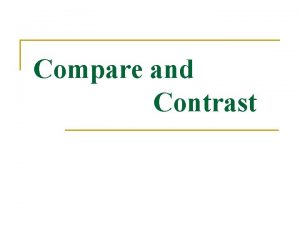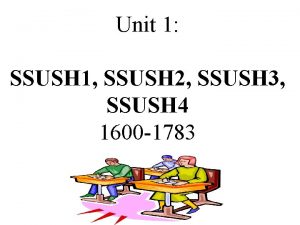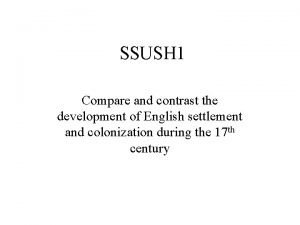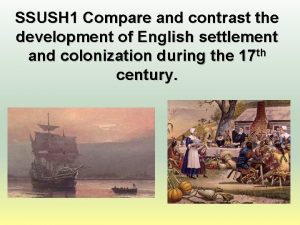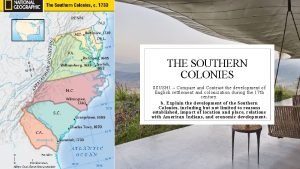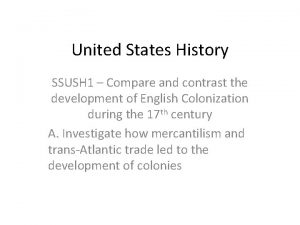SSUSH 1 Compare and Contrast the development of

























- Slides: 25

SSUSH 1 – Compare and Contrast the development of English settlement and colonization during the 17 th century. a. Investigate how mercantilism and trans-Atlantic trade led to the development of colonies

Mercantilism and trans-Atlantic trade • Mercantilism is an economic theory based on reducing a country’s imports while expanding its exports in order to maximize wealth. • Thus, mercantilism inspired European governments, including England, to promote American colonies as sources of raw materials not readily available in the mother country • Some of the most important resources England plucked from its colonies included lumber, sugar, wool, tobacco, rice, and indigo. • England implemented a series of Navigation Acts in the mid-1600 s to ensure a favorable trade arrangement with the colonies. The laws were designed to keep England’s own colonies from competing with their mother country by mandating three fundamental criteria for trans-Atlantic trade.

What does Mercantilism look like? • Exports > Imports • England Prospers • Colonies exist to enrich England- not to make the colonies prosper.

Trans-Atlantic Trade • England’s trans-Atlantic trade flourished under the mercantilist system. Trans-Atlantic trade, sometimes referred to as Triangular Trade, often took a three step voyage around the Atlantic rim. • Labor needs were first filled through the use of indentured servants and then later by permanently enslaved Africans. • African slaves were introduced as a labor source beginning in 1619. Eventually, plantation owners came to rely on African slaves as a more profitable and renewable source of labor.

b. Explain the development of the Southern Colonies, including but not limited to reasons established, impact of location and place, relations with American Indians, and economic development. • The Southern Colonies included Virginia, Maryland, Carolina (which eventually split into North Carolina and South Carolina), and Georgia. The location of the Southern Colonies, with the region’s rich soil and long growing season, fostered the development of strong agricultural producing colonies. • Commercial farms tended to develop south of the fall line and grew primarily high yield, labor intensive cash crops such as rice, tobacco, and indigo. As a result, slave labor was more common south of the fall line while less common north of the same line.

Virginia • The first permanent English colony in North America was founded in 1607 at Jamestown, Jamestown Virginia. The establishment of Jamestown was a business venture of London’s Virginia Company, a joint-stock company, which raised capital for the expedition to America by selling shares of company stock to investors. • Tobacco production was another development that helped to save the Jamestown colony and make it more lucrative. John Rolfe, who later married the American Indian princess Pocahontas, arrived in Jamestown in 1610 from the Caribbean. He experimented with tobacco seeds to produce a Crop that became very desirable in Europe • Chief Powhatan was the principal leader of all the Powhatan tribes in the Chesapeake Bay region when the English settlers arrived in 1607.

• The local natives, the Powhatan, had an uneasy peace with the Virginia Company settlers and traded them food, helping the colony to survive for the first few years. • As more English colonists began to arrive and encroach further into native lands, the relationship became more violent. Once large scale cash crops of tobacco, rice, and indigo proved highly profitable in the mercantilist system, more colonists arrived seeking economic opportunity. Relations eventually deteriorated and in 1622 the Powhatan attack Jamestown, killing many settlers. • The uprising is put down, but causes the King to revoke the Virginia Company’s Charter, turning Virginia into a Royal colony led by a governor appointed by the King. Relations with the Natives

Tobacco • At first the Virginia Company failed to produce a cash crop and the Jamestown colony nearly failed. • John Rolfe established a blend of tobacco that was sold in England produced a cash crop that made the colony prosper (1614).

Maryland In an effort to preserve the rights of Catholics in Maryland, the Lord Baltimore quickly had the Act of Toleration passed in the Maryland legislative assembly. This colonial law guaranteed religious freedom in Maryland to all Christians – Protestant and Catholic. Carolinas (North & South) Southern Carolina along the coast became a great producer of rice and indigo on large commercial plantations. The city of Charleston in the southern Carolina colony was a transportation hub for exporting the valuable cash crops. Northern Carolina, above the fall line, had a different soil and climate, which did not lend itself as readily to rice and indigo cultivation. Instead, the farmers in the northern region of the colony developed small tobacco farms. Georgia was the last English colony established in North America prior to the Revolutionary War. In 1732, Georgia was created by England for two purposes. First, and foremost, England wanted to create a defensive buffer between the dangerous Spaniards in Florida and the increasingly valuable South Carolina plantations and Charleston port. The second purpose was to reduce the number of debtors crowding London jails by sending many of them to the new Georgia colony for a fresh start and to provide defense of South Carolina.

New England Colonies • The New England Colonies (Massachusetts, Rhode Island, Connecticut, and New Hampshire) were marked by poor, thin, rocky soils and a relatively short growing season that made farming difficult. • New Englanders became the merchants of the colonies and New England-based ships were the carriers of colonial goods in the trans. Atlantic trade. • Anglican Church Conflict Leads Puritans to Colonize New England • There were two types of Puritans – separatist Puritans and non-separatist Puritans. The separatist Puritans, also known as Pilgrims, were no longer interested in simply reforming the Church.

Plymouth Colony • The Pilgrims, which were a separatist group that broke away from the Church of England, established the Plymouth Colony in 1620. • Before disembarking the Mayflower, the Pilgrims created and signed the Mayflower Compact. The document is important in the study of the early colonial period in that it was a pledge by the colonists to govern themselves through majority rule.

Massachusetts Bay Colony • Led by John Winthrop The Puritans tightly controlled the political and social structure of the community. Communities were run using town meetings. • Voting rights were limited to men who belonged to the church, and church membership was tightly controlled by each minister and congregation. • Towns were run as direct democracies with each voting member having a direct role in the administration of government. The church was the central force in governing the community. As a result of their strict religious beliefs, the Puritans were not tolerant of religions that differed from their own. Frequently, those who disagreed with Puritan ideology and practices were banished from the colony

• In 1635 a Roger Williams was a Puritan minister who faced banishment when his teachings emphasized the limitations of the church to control an individual’s conscience. • Williams founded Providence: he separated the church and state and allowed differing religious beliefs. • Two unique characteristics of the Rhode Island colony were 1) American Indians were treated more respectfully and they were paid for their land 2) true religious toleration was practiced in the colony. Rhode Island

Connecticut • Another group of Puritans left Massachusetts Bay in 1636. Thomas Hooker was a Puritan minister who differed with the church over the colonists’ individual participation in governing • The newly organized colony made a significant contribution to the foundation of the future United States when it drafted America’s first written constitution, The Fundamental Orders of Connecticut in 1639.

New Hampshire • Originally a portion of the Massachusetts Bay colony, the small settlements in the north • eventually formed their own New Hampshire colony in 1679. The region had become somewhat more • religiously diverse than the strict Puritan settlement of Massachusetts Bay.

• New Amsterdam, located on Manhattan Island, was the main Dutch settlement. • To increase the population, the Dutch allowed anyone to buy land in the new colony, making the colony very diverse. • King Charles II of England felt the Dutch were growing too strong, and seized the colony in 1664 for England. • England divides the area into two new colonies, New York, and New Jersey. New Amsterdam

• The English Mid-Atlantic Colonies (New York, New Jersey, Pennsylvania, and Delaware) that were created from the previous Dutch New Netherland colony were geographically fortunate to have good harbors and river systems that significantly shaped their development. • The Hudson and Delaware Rivers provided highways to the interior of North America. • Harbors in cities such as Philadelphia and New York City allowed the Mid-Atlantic Colonies to grow into major commercial hubs for all of England’s American colonies. • The Mid-Atlantic Colonies also farmed significant quantities of wheat and corn, similar to the cash crop production of their southern neighbors. Mid-Atlantic Colonies a. k. a. Middle Colonies

New York was founded by the Dutch on the tip of Manhattan Island just inland from the Atlantic Ocean. It was established as a fur trading post. Once England acquired the colony, King Charles II gave the recently acquired New Netherland colony to his brother James, the Duke of York, as a proprietary colony in 1664. The colony and port were renamed New York in honor of the new proprietor. The original settlers from the previous Dutch colony were allowed to remain in residence, speak their own languages, and worship as they pleased. Because of this the colony is culturally and religiously diverse. NYC Circa 1609 (National Geographic)

New York is also located on a large, natural harbor, making it suitable for shipping and trade. Wall Street, location of the United States’ modern financial center, was literally a twelve-foot wall that ran the width of Manhattan Island during the colonial period. The wall’s purpose was to keep the natives out of the settlement at the tip of the island

Bacon’s Rebellion Bacon raised a militia and took over Jamestown in 1676 The Governor retook the colony later that year after Bacon became ill and died

New Jersey • Land in New Jersey was sold at low prices to attract settlers.

Pennsylvania In 1680 William Penn, a Quaker, inherited an area south of New York as a debt from King Charles II.

Quakers • Quakers believed that there was no need for churches or ministers (How did this differ from the Puritan beliefs? ) • They also advocated pacifism, and objected to political and religious authority • The Quakers believed in religious toleration and fair treatment of the American Indians in the area. Penn advertised his colony throughout Europe and quickly attracted over 1000 settlers in the first year. Philadelphia rapidly grew to be a vibrant port city engaged in the trans-Atlantic trade of goods.

Delaware • originally the North American colony of New Sweden. • The Swedish owned colony was taken by the Dutch and absorbed into New Netherland in 1631, prior to England taking possession of the region. • The area known today as Delaware remained under the control of the Duke of York until he transferred the land to William Penn in 1682. • It remained a part of Pennsylvania until 1704, when Delaware became a separate colony and allowed to govern itself through a legislative assembly.

Questions 1. What role did the Virginia Company and tobacco have in saving the Virginia colony? 2. What type of government did the early colonies form? Provide an example 3. What was the relationship between the Powhatan and the colonists? How did it change and why? 4. How was the settlement of Pennsylvania different from the settlement in Massachusetts?
 Pattern of development classification
Pattern of development classification Patterns of development comparison and contrast examples
Patterns of development comparison and contrast examples Comparison chart romeo and juliet vs. west side story
Comparison chart romeo and juliet vs. west side story Ssush
Ssush Ssush
Ssush Ssush
Ssush Ssush
Ssush Ssush
Ssush Vertical integration
Vertical integration King of england during revolutionary war
King of england during revolutionary war Compare and contrast maynard jackson and andrew young
Compare and contrast maynard jackson and andrew young Compare and contrast transverse and longitudinal waves
Compare and contrast transverse and longitudinal waves Compare and contrast spring tides and neap tides.
Compare and contrast spring tides and neap tides. Compare and contrast cold wave and wind chill factor
Compare and contrast cold wave and wind chill factor Expository text structures
Expository text structures Compare and contrast analog and digital forecasting
Compare and contrast analog and digital forecasting Contrast signal words
Contrast signal words Rainsford and zaroff venn diagram
Rainsford and zaroff venn diagram Transverse and longitudinal waves both *
Transverse and longitudinal waves both * Compare and contrast chemical and physical changes
Compare and contrast chemical and physical changes Compare and contrast gradualism and punctuated equilibrium
Compare and contrast gradualism and punctuated equilibrium Compare and contrast macbeth and lady macbeth
Compare and contrast macbeth and lady macbeth Macbeth and lady macbeth compare and contrast
Macbeth and lady macbeth compare and contrast Macbeth prophecies quotes
Macbeth prophecies quotes Compare and contrast pakistani and indian music
Compare and contrast pakistani and indian music Eisenhower and truman compare and contrast
Eisenhower and truman compare and contrast



